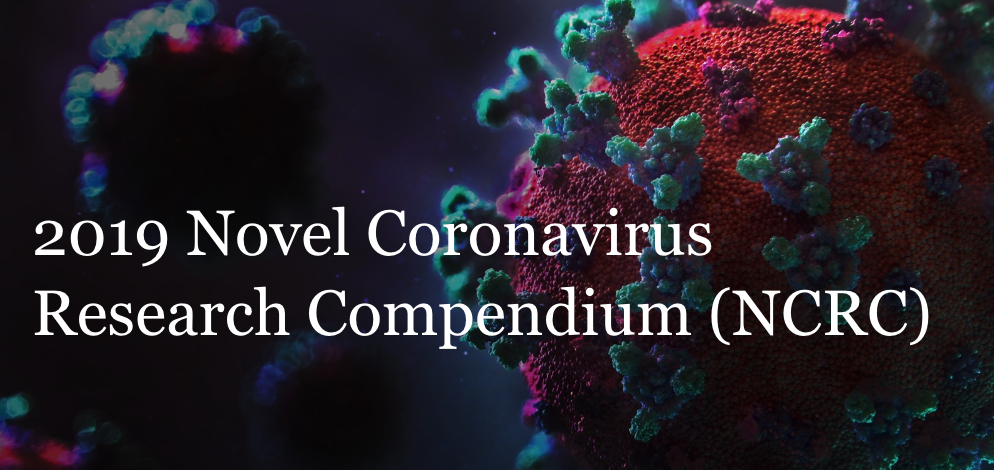Persistent COVID-19 symptoms in a community study of 606,434 people in England
This article has been Reviewed by the following groups
Discuss this preprint
Start a discussion What are Sciety discussions?Listed in
- Evaluated articles (ScreenIT)
- Evaluated articles (NCRC)
Abstract
Long COVID remains a broadly defined syndrome, with estimates of prevalence and duration varying widely. We use data from rounds 3–5 of the REACT-2 study ( n = 508,707; September 2020 – February 2021), a representative community survey of adults in England, and replication data from round 6 ( n = 97,717; May 2021) to estimate the prevalence and identify predictors of persistent symptoms lasting 12 weeks or more; and unsupervised learning to cluster individuals by reported symptoms. At 12 weeks in rounds 3–5, 37.7% experienced at least one symptom, falling to 21.6% in round 6. Female sex, increasing age, obesity, smoking, vaping, hospitalisation with COVID-19, deprivation, and being a healthcare worker are associated with higher probability of persistent symptoms in rounds 3–5, and Asian ethnicity with lower probability. Clustering analysis identifies a subset of participants with predominantly respiratory symptoms. Managing the long-term sequelae of COVID-19 will remain a major challenge for affected individuals and their families and for health services.
Article activity feed
-
-

Our take
This study, available as a preprint and thus not yet peer-reviewed, used cross-sectional data from three rounds of a national population-based study in England to estimate the prevalence and correlates of persistent COVID-19 symptoms, and patterns of symptom occurrence. Of the 76,155 participants with self-reported COVID-19 symptom onset 12+ weeks before their survey date, 37.7% reported at least one persistent symptom 12+ weeks from COVID-19 diagnosis. Among all participants, the weighted population prevalence of at least one persistent symptom 12+ weeks from symptom onset was 5.75% (95% CI: 5.68, 5.82) in England. They also identified that among those with persistent symptoms, symptoms tended to cluster as “tiredness” (fatigue, muscle aches, and difficulty sleeping) or “respiratory” (shortness of breath, chest …
Our take
This study, available as a preprint and thus not yet peer-reviewed, used cross-sectional data from three rounds of a national population-based study in England to estimate the prevalence and correlates of persistent COVID-19 symptoms, and patterns of symptom occurrence. Of the 76,155 participants with self-reported COVID-19 symptom onset 12+ weeks before their survey date, 37.7% reported at least one persistent symptom 12+ weeks from COVID-19 diagnosis. Among all participants, the weighted population prevalence of at least one persistent symptom 12+ weeks from symptom onset was 5.75% (95% CI: 5.68, 5.82) in England. They also identified that among those with persistent symptoms, symptoms tended to cluster as “tiredness” (fatigue, muscle aches, and difficulty sleeping) or “respiratory” (shortness of breath, chest tightness, and chest pain). The “respiratory cluster” was more common among those with more severe initial disease. While it’s possible that this persistent symptom prevalence is an overestimate given a low survey response rate and potential for pre-existing symptoms to be attributed to COVID-19, this paper has important implications for clinicians treating individuals with a history of COVID-19 and adds to our collective understanding about COVID-19’s long-term sequelae.
Study design
cross-sectional
Study population and setting
This study used cross-sectional data from rounds three to five of the Real-Time Assessment of Community Transmission-2 (REACT-2) study in England between September 2020 and February 2021. The REACT-2 study used a cluster sampling approach to randomly select individuals from the National Health Service patient list within each of the 315 lower-tier local authority areas (LTLA). The study collected self-reported PCR testing history, as well as demographic characteristics, medical comorbidities, and current symptoms that may be related to COVID-19. This analysis included individuals who reported a history of symptomatic COVID-19 with symptom onset 12-weeks or more before the survey date. They weighted symptom prevalence estimates by sex, age, ethnicity, LTLA-area, and an index of multiple deprivation to estimate prevalence across England. They then investigated the relationship between demographic and lifestyle factors with any symptom persistence at 12 weeks or more via logistic regression, gradient boosted tree models, and generalized additive models. Finally, they used CLustering LARge Applications (CLARA) to identify symptom clusters among participants with lingering symptoms 12 or more weeks from their COVID-19 onset.
Summary of main findings
Of the 508,707 participants in REACT-2 rounds three to five (26-29% response rate across rounds), 76,155 reported a valid date of symptomatic COVID-19 symptom onset 12 or more weeks before their survey date. A large percentage (37.7%) reported at least one persistent symptom at 12+ weeks from symptom onset, with 14.8% reporting at least three persistent symptoms. The predominant symptom at 12 weeks was tiredness, followed by shortness of breath, difficulty sleeping, and muscle aches. They calculated the weighted population prevalence in England of at least one persistent symptom of 5.75% (95% CI: 5.68, 5.82) and three or more persistent symptoms of 2.22% (95% CI: 2.18, 2.26). Overall, female participants reported more persistent symptoms than male participants (age-adjusted OR: 1.51, 95% CI: 1.46, 1.55 for 12+ weeks of symptoms), which increased with age. After adjustment for age and sex, comorbidities, weight, smoking, vaping, living in deprived areas, being low income, and being a healthcare worker were each associated with increased reports of symptom persistence at 12+ weeks. In the clustering analysis (N=53,309), they identified a “tiredness cluster” (N=15,799, 30%) — which included fatigue, muscle aches, and difficulty sleeping — and a “respiratory cluster” (N=4,441, 9%)— which included shortness of breath, chest tightness, and chest pain — of persistent symptoms, with the “respiratory cluster” more common among those with a history of more severe COVID-19 initially.
Study strengths
This national study included a large number of randomly selected participants across England drawn from NHS patient lists. The study sample therefore included individuals who tested positive for SARS-CoV-2 in the community regardless of their initial disease severity or whether or not they were hospitalized. The study used multivariable analyses to identify factors with independent associations with COVID-19 sequelae.
Limitations
This survey had a relatively low response rate (<30%), which raises questions about how representative respondents were of the initial sampling frame or the national population. Without data comparing respondents and non-respondents, it is difficult to estimate the magnitude or direction of bias, but it is plausible that individuals with prolonged COVID-19 symptoms may be more likely to participate than those without sequelae, potentially overestimating the prevalence of long COVID-19 among those with symptomatic acute infections. It is not clear when symptom onset occurred (i.e. whether it was caused by COVID-19 or whether it was prevalent before COVID-19 onset, both of which could be complicated by initial symptomatic COVID-19 duration). By focusing on “any” symptom prevalence at 12+ weeks, they may be overestimating symptom persistence, especially considering many symptoms reported could be influenced by non-COVID-19 conditions and lifestyle factors (such as fatigue and headaches).
Value added
This population-based study estimated the national prevalence of COVID-19 symptoms that persist 12+ weeks from initial COVID-19 onset, highlighting the long-term implications of SARS-CoV-2 infection. The large sample size and random sampling methodology of this study have likely captured a more representative range of post-COVID-19 experiences than studies relying on samples who were hospitalized with COVID-19 or those who responded to surveys on social media.
-

SciScore for 10.1101/2021.06.28.21259452: (What is this?)
Please note, not all rigor criteria are appropriate for all manuscripts.
Table 1: Rigor
Ethics not detected. Sex as a biological variable not detected. Randomization not detected. Blinding not detected. Power Analysis not detected. Table 2: Resources
Antibodies Sentences Resources Participants: The REACT-2 programme evaluates community prevalence of SARS-CoV-2 anti-spike protein antibody positivity in England. anti-spike proteinsuggested: NoneResults from OddPub: Thank you for sharing your code and data.
Results from LimitationRecognizer: We detected the following sentences addressing limitations in the study:Strengths and Limitations: This study uses a large random community sample with a high response rate (26–29% across the three rounds) to describe the persistence of COVID-19 symptoms. It is …
SciScore for 10.1101/2021.06.28.21259452: (What is this?)
Please note, not all rigor criteria are appropriate for all manuscripts.
Table 1: Rigor
Ethics not detected. Sex as a biological variable not detected. Randomization not detected. Blinding not detected. Power Analysis not detected. Table 2: Resources
Antibodies Sentences Resources Participants: The REACT-2 programme evaluates community prevalence of SARS-CoV-2 anti-spike protein antibody positivity in England. anti-spike proteinsuggested: NoneResults from OddPub: Thank you for sharing your code and data.
Results from LimitationRecognizer: We detected the following sentences addressing limitations in the study:Strengths and Limitations: This study uses a large random community sample with a high response rate (26–29% across the three rounds) to describe the persistence of COVID-19 symptoms. It is therefore more likely to be representative of the range of disease severity in the population compared to some others, especially those based on hospitalised cases alone5. The focus in our questionnaire on persistence of self-reported COVID-19 symptoms, without specific reference to Long COVID (in contrast to the questions in some other studies7) has allowed us to investigate the persistence of a wide range of specific symptoms that have been suggested as relevant to Long COVID.3,5 However, it is clear that a wide spectrum of symptoms and clinical presentations post-COVID-19 may be involved; our open free-text question identified a number of symptoms not included in our questionnaire including “brain fog”, “palpitations” and “hair loss”.29 However, as the study was based on self-reported data and because many of the symptoms are common and not specific to COVID-19, we may, as noted, have overestimated the prevalence of persistent symptoms. A further limitation is the retrospective study design, which introduces the possibility of recall bias. Nonetheless, in earlier analyses we have shown that participant reports of date of onset of their symptoms produce an epidemic curve that very closely tracks the epidemic.27,30,31 Respondents were restricted to reporting a single date of (initial) sym...
Results from TrialIdentifier: No clinical trial numbers were referenced.
Results from Barzooka: We did not find any issues relating to the usage of bar graphs.
Results from JetFighter: We did not find any issues relating to colormaps.
Results from rtransparent:- Thank you for including a conflict of interest statement. Authors are encouraged to include this statement when submitting to a journal.
- Thank you for including a funding statement. Authors are encouraged to include this statement when submitting to a journal.
- No protocol registration statement was detected.
Results from scite Reference Check: We found no unreliable references.
-


